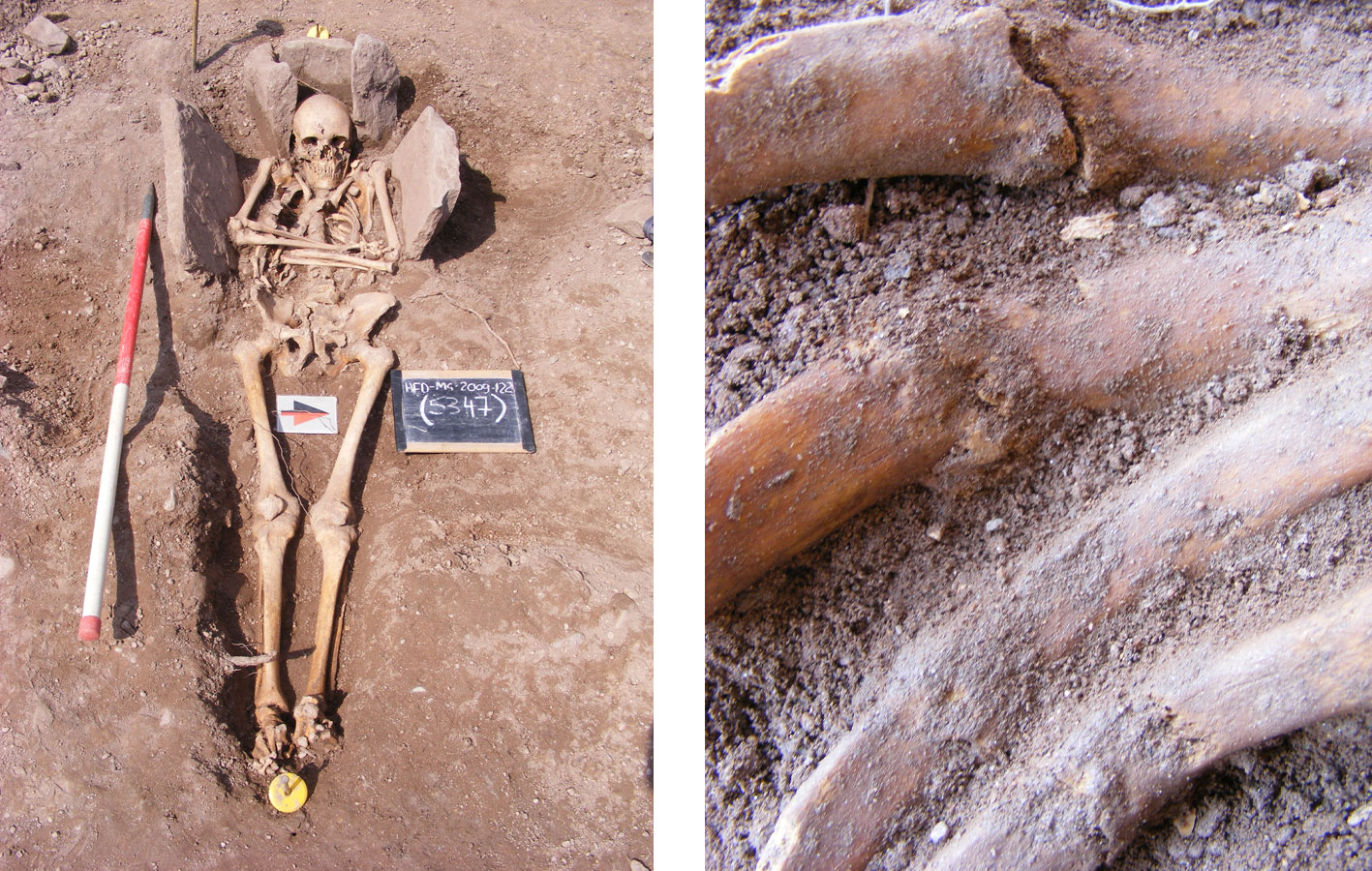A detailed study
The detailed osteological study of over 700 individuals from excavations undertaken between 2009–2011 produced exciting glimpses into life, disease, accident and injury from the Norman Conquest through to the 19th century.
However, some cases stood out more than others, and Andy Boucher who managed the post excavation work, asked for Osteological Biographies on these individuals, such as the burial of a leper, or a lady with a severed hand. These in turn questioned our perceptions about the past inhabitants of Hereford. Was the leper buried at a time when the Bishop of Hereford was a leper himself, was the lady a thief?
One of the biographies is an individual that has featured in the February edition of the BBC History Magazine entitled ‘Into the bloody world of the medieval tournament’ and is believed to be a Knight.
The evidence
The skeletal remains show numerous fractures, however, their location is distinctive and localised, all to ribs and the shoulder on the right side. Some of these had healed others had not, showing they were caused on more than one occasion. The unhealed injuries in the same location indicated that at death he had not recovered from his latest wounds. He also had an unusual twisting break to his left lower leg. The suggestion is a hit to the right upper body, which spins the individual and causes a further fracture as perhaps his foot is caught in a stirrup on the left side. These wounds are all consistent with injuries that can be sustained through tourney or jousting.
Andy Boucher said ‘obviously we can never be sure how people came about their wounds, but in this case there is a considerable amount of evidence suggesting this man was involved in some form of violent activity and the locations of his injuries do match quite closely what might be expected from taking part in mock battles. The fact that he was still doing this after he was 45 suggests he must have been very tough‘.
We also know from analysis of his teeth that the man was likely to have been brought up in Normandy and moved to Hereford later in life. The type of grave – a partial stone lined burial, is again consistent with a date (specifically for the Hereford area) of AD 1100 – 1300.
A rough war game
In 1194 Richard the Lionheart gave a licence to hold tournaments in five locations in England, after his father Henry II had made tournaments illegal.
The original tournaments were based on the melee, where large numbers of knights would fight as individuals or in teams- on horse or on foot. These fights were not for fun and they were treated as real battles, with combatants who were captured actually being ransomed, and accidental deaths were also possible.
Headland’s team is currently working on the publication of the results of this important excavation,

![(The Morgan Bible [1]) [Public domain], via Wikimedia Commons (The Morgan Bible [1]) [Public domain], via Wikimedia Commons](http://www.bajrfed.co.uk/bajrpress/wp-content/uploads/2015/02/Morgan-bible-fl-29-696x429.jpg)

